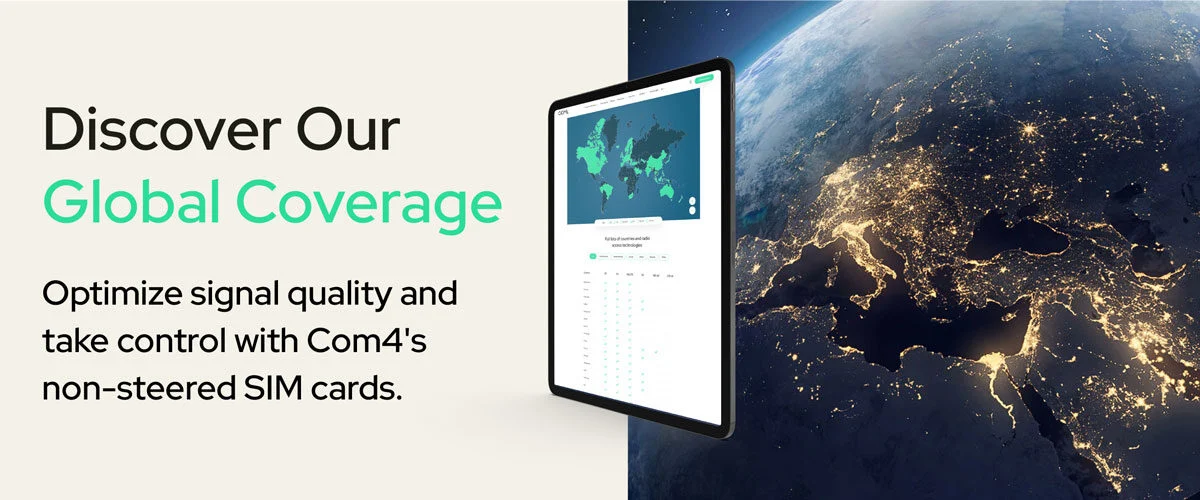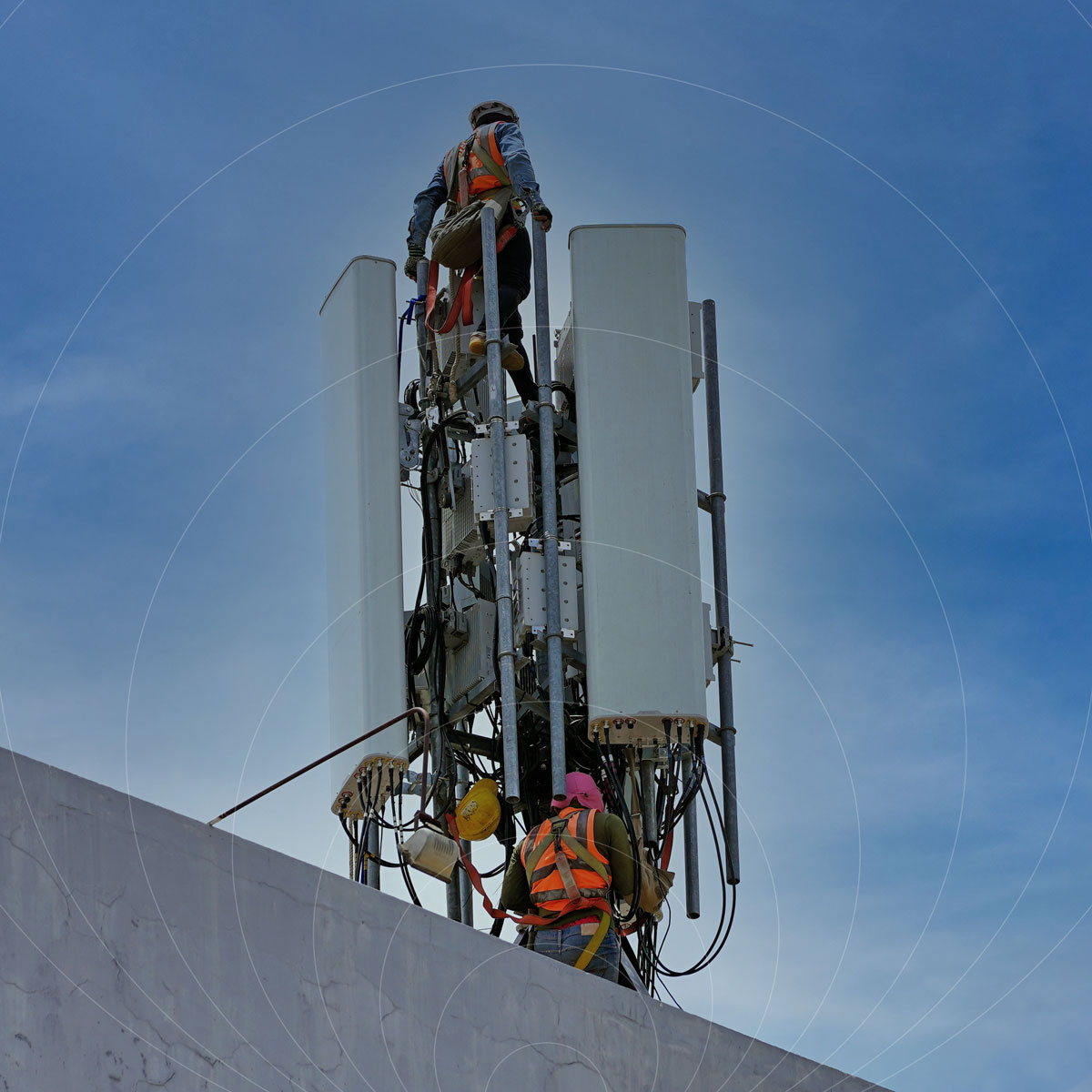In this article, we explore why LTE-M is technically and strategically superior to 2G for today’s IoT requirements, what changes are coming in the Nordic market, and how to prepare your business for a successful migration.
The 2G Sunset: A Nordic reality in 2025–2027
Many Nordic IoT deployments still rely on 2G (GSM) networks. But this legacy technology is being phased out to make room for more efficient spectrum use.
Norway
- Telia will begin its phased shutdown of the 2G network in August 2025, with full national decommissioning completed by December 2025.
- The 2G spectrum will be reallocated to 4G and 5G to improve performance and capacity.
Sweden
- Telenor and Tele2 (via Net4Mobility) will sunset their 2G networks on December 1, 2025.
- Telia Sweden will continue 2G operations until the end of 2027, offering limited extended support for sectors such as agriculture and alarm systems.
These changes will impact legacy IoT systems across energy, utilities, transport, security, healthcare, and logistics. Devices that are not upgraded will lose connectivity once the 2G networks are shut down.
LTE-M: Built for IoT, ready for the future
LTE-M (Long Term Evolution for Machines, also known as LTE Cat-M1) is a 3GPP standard within the LPWAN (Low-Power Wide Area Network) family, specifically designed to support low-power, low-bandwidth, and mobile IoT applications.
Unlike 2G, which was retrofitted for M2M use, LTE-M was built from the ground up to meet the needs of modern IoT systems. It leverages existing 4G infrastructure, enabling wide coverage, long battery life, secure communication, and seamless mobility—all critical for business-grade deployments.
Technical benefits of LTE-M vs. 2G
Power efficiency with eDRX and PSM
LTE-M supports Power Saving Mode (PSM) and extended Discontinuous Reception (eDRX), enabling devices to “sleep” for long periods while maintaining connectivity.
Result: Up to 50% reduction in power consumption compared to 2G during network registration, session setup, and detachment.
This is a key advantage for battery-powered IoT devices, such as asset trackers, wearable sensors, and remote monitoring units.
Stronger security architecture
2G uses outdated encryption algorithms like A5/1 and A5/2, which have been compromised in academic and real-world attacks. In contrast, LTE-M implements:
- 128-bit AES encryption.
- Mutual authentication between network and device.
- Secure OTA (Over-the-Air) updates.
- SIM-based security integration with modern infrastructure.
For sectors like critical infrastructure, medical devices, and transportation, these improvements are essential.
Latency and mobility for real-time applications
2G networks have relatively high latency, often in the hundreds of milliseconds. LTE-M reduces this dramatically, enabling near-real-time responsiveness suitable for:
- Fleet management.
- Emergency services.
- Condition monitoring.
Its optimized handover mechanisms and improved mobility support make LTE-M ideal for mobile IoT use cases where 2G often struggles.
Extended coverage and penetration
LTE-M has a 164 dB maximum coupling loss, comparable to or better than 2G, enabling deep indoor and rural penetration.
In Norway and Sweden, LTE-M coverage is already extensive due to nationwide 4G infrastructure.
Device longevity and future-proofing
Many IoT devices remain in the field for 5–15 years. As 2G sunsets approach, investing in LTE-M ensures:
- Long-term network support
- Backward compatibility with evolving 4G/5G systems
- Avoidance of forced replacement or downtime due to network discontinuation
Roaming and scalability
LTE-M supports international roaming across many European networks and global IoT alliances. Devices can move across borders without losing connectivity—a major advantage for cross-border logistics, smart metering, and environmental monitoring systems.
Technical comparison: LTE-M vs. 2G for IoT
|
Feature |
2G (GSM) |
LTE-M (Cat-M1) |
|
Max Data Rate |
~50 kbps (DL) |
~300–375 kbps (DL/UL) |
|
Latency |
High |
Low (suitable for real-time) |
|
Power Efficiency |
Moderate |
Excellent (eDRX, PSM) |
|
Security |
Weak encryption (A5/1) |
128-bit AES, secure OTA |
|
Coverage |
Declining |
Strong (via 4G infrastructure) |
|
Mobility Support |
Limited handover support |
Seamless handovers |
|
Device Density |
Low |
High (massive IoT support) |
|
Module Cost |
Low |
Slightly higher, but falling |
|
Future Viability |
Ending (sunset 2025–27) |
Long-term roadmap (4G/5G aligned) |
When does 2G still make sense?
There are limited scenarios where maintaining 2G compatibility may be justified:
- Rural deployments where LTE-M coverage is not yet available.
- Legacy systems with cost constraints or long replacement cycles.
- Dual-mode fallback in mission-critical use cases (e.g., dual SIM LTE-M/2G trackers).
However, these are exceptions—not the rule. Dual-mode devices can serve as a transitional bridge, but strategic planning should prioritize LTE-M for all new deployments.
How Com4 supports your migration
Com4 provides fully managed IoT connectivity services, helping you:
- Identify and audit 2G-reliant devices in your portfolio
- Test and validate LTE-M and NB-IoT compatibility
- Select the right data plans and SIM profiles
- Handle firmware updates, eUICC provisioning, and certification
- Plan and execute full migrations with minimal disruption
We offer IoT connectivity with full Nordic and global coverage, tailored to your specific deployment—whether you operate in transportation, utilities, industrial IoT, or public safety.
Key milestones: Nordic 2G shutdown
|
Country |
Operator(s) |
2G Sunset Timeline |
|
Norway |
Telia |
Phased from August–December 2025 |
|
Sweden |
Telenor & Tele2 (Net4M) |
December 1, 2025 |
|
Sweden |
Telia |
December 2027 |
 What to do now
What to do now
If you operate IoT or M2M systems in Norway or Sweden and still rely on 2G, now is the time to act. Migration projects typically require:
- Hardware upgrades or firmware modifications.
- Network testing and certification.
- Operational and logistics planning.
Early planning ensures continuity and opens the door to a smarter, more resilient IoT architecture with improved performance, lower cost of ownership, and better security.
Get in touch with Com4 to discuss your 2G migration and explore LTE-M and NB-IoT options.

 CASE STUDY
CASE STUDY




